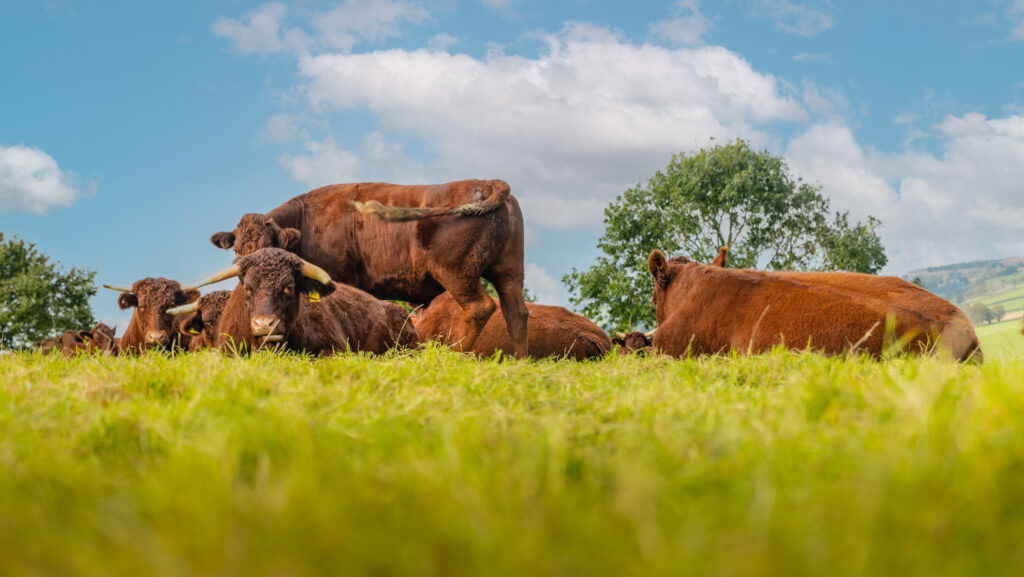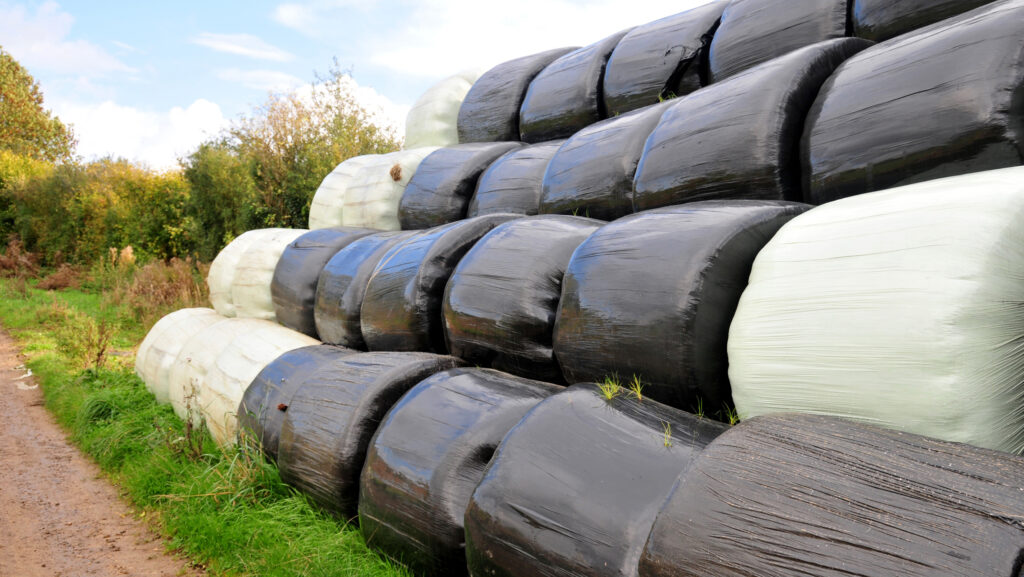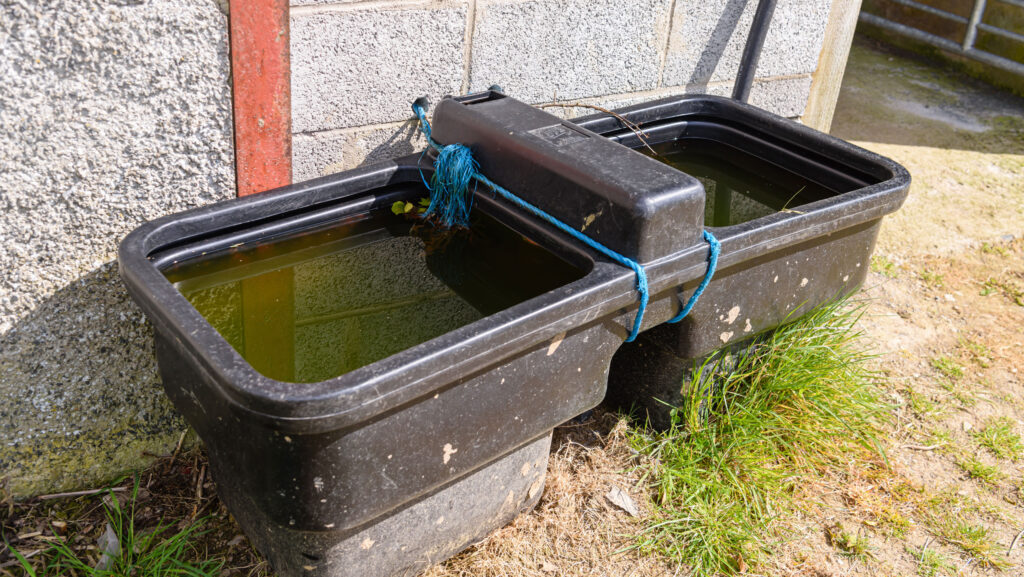How to assess farm mineral status after high rainfall
 © Adobe Stock
© Adobe Stock Prolonged rainfall has led to concerns about mineral supplementation on farm, due to leaching from the soil.
A mineral audit may be a better investment than reaching straight for boluses, buckets, and drenches after a challenging period of high rainfall and widespread flooding.
This is according to Pete Bone of Livestock and Grassland Mineral Consultancy who says a mineral audit can identify an imbalance, shortfall, or oversupply.
Farms across much of the country have reported mineral issues this spring, with high rainfall being blamed for leaching some trace elements and minerals out of the soil.
See also: How to correctly supplement beef cattle with minerals
“It’s easy to think there’s a mineral problem when there isn’t. And there can be an understandable feeling that buying and using a product is more proactive than testing,” says Pete.
Minerals can be in the soil, but not in the plant, or in the plant, but not in the animal. He adds: “A mineral audit can unravel antagonistic issues and imbalances.”
Pete suggests a few steps to go through when assessing mineral issues.
What are the stock telling you?
- Are they drinking each other’s urine? Can be a sign of sodium and chloride imbalance (often a lack of sodium).
- Do they chew on stones? Known as pica, this may suggest there isn’t enough phosphorous in the diet.
- Are they eating soil? This can potentially be linked to both the above issues.
- Are they thriving? Check daily liveweight gains, coat colour, eye dullness. Rule out parasites with a faecal egg count.
Are you getting the basics right?
- Before worrying about minerals, ask yourself how much dry matter they have been eating.
- A basic forage analysis or grass sample can alert you when forage on the farm is falling short of protein, energy, and dry matter.
- Heavy rain and a wet harvest can produce low dry matters in grazed grass or silage, meaning eating sufficient dry matter becomes a challenge for stock.
What do you already know?
- What does your soil test say? More farms are measuring the cation exchange capacity to assess how minerals are held in the soil particles (or soil colloid). This is over and above a basic soil test.
- What are you spreading? The fertiliser and lime products you apply may be restricting some minerals and affecting mineral balance. If a low pH is addressed, this might solve your mineral problem.
- What are you feeding? Certain feeds and forages have different mineral profiles that need consideration, especially if bought in. Compound feeds are often mineralised, and intake can be worked out quite easily. Are you already supplementing them with minerals?
- What is in lick buckets? Guessing animal intakes from lick buckets can be tricky.
- Has the farm been flooded? Flooding and high rainfall can depress iodine levels in soils. It also washes nitrates, sulphates, phosphates, and chlorine through the soil profile as they are negatively charged and do not bind to the negatively charged soil colloid. Plants do not require iodine for growth, but it is vital for growing stock. Yet many soils are low in iodine. Floodwater can leave substances behind that alter forage nutrition.
Is it worth doing a mineral audit?
Pay for forage, blood, liver, and water tests to start understanding mineral levels and imbalances. (See “How to conduct a mineral audit” below)

© Adobe Stock
How to conduct a mineral audit
Forage test
A good starting point is a wet chemistry forage mineral analysis undertaken by a laboratory, because soil testing doesn’t tell you what is in the plant and available to the animal.
Advice
- Ask the laboratory for a forage mineral report (specify it’s for livestock) to ensure they test what you need. For example, cobalt is often missed in a forage analysis, unless you specify it is for animals.
- Most tests require a 250-300g sample (freshweight) of plant material.
- Sample the forage relevant to the livestock having issues. Consider sampling all land and forage types if necessary.
- Take a sample wearing clean rubber gloves and use scissors if cutting a sample from the sward.
- A mineral content may look low, but intake might be sufficient to meet the animal’s requirements. Multiply the amount of mineral by the kilograms of intake. For example, a 70kg ewe eating 3.5% of her bodyweight in early lactation will be eating 2.5kg of dry matter.
Practicalities
- Costs about £60 and typically takes 10 working days.
- A vet may offer this service, with a consulting and management fee and many of the forage laboratories around the country will test your feed for you.
Blood test
A blood test conducted by the farm vet may be worthwhile to investigate imbalances of the macro mineral magnesium, and certain trace elements (or micro minerals), particularly selenium. Manganese, iron, copper, and zinc can also be screened this way.
Advice
- A selenium or copper issue might be an oversupply of something on the agronomy side.
- Sulphur, for instance, can cause copper issues, especially in conjunction with iron and molybdenum, and it can affect selenium absorption.
- Copper utilisation can be affected by sulphur, molybdenum, and iron, and this can be shown with a blood test.
Practicalities
- Costs vary according to how consultants, vets, or laboratories price the advice.
- Most services come with some kind of interpretation, although in-depth analysis may be charged for on top of the testing and reporting service.
Liver biopsy
Sampling the liver can determine whether a mineral level is excessive. The liver is a storage organ and can reveal what nutritional stresses the animal is under.
Advice
- Oversupply of copper or selenium are the common toxicities that kill livestock.
- If considering excess selenium, it can start to break down tissue and hoof structure, so check how feet are looking.
- Consider the animal you are testing and whether it is representative of the animal class of concern.
- Lambs in the back end and calves through spring are most commonly found on post-mortem tables with selenium and copper issues.
Practicalities
- Only a small number of UK vets conduct liver biopsies. It is far more common in New Zealand.
- Abattoir feedback can be used to screen livers through the year.
- Allow five-to-10 working days for results.
- Four animals should be enough for a robust sample, providing nutrition and management is the same.
- Good handling facilities are required for live sampling.
Water test

© Adobe Stock
Testing water is particularly relevant for dairy farmers as milking cows drink huge quantities.
Advice
- Mains water tends to be OK, but a spring or borehole, may be an issue.
- If water smells eggy it could be a sign of hydrogen sulphide. Orange or black colouring seen on the end of taps or pipes can denote excess manganese or iron.
- Water can interfere with dietary cation and anion balance diets in dry dairy cows.
- Dairy parlour water tests for E Coli and legionella will probably not look for minerals.
Practicalities
- Laboratories will send a small container to fill.
- Sample from taps, not troughs (which could be contaminated).
- A report should be returned in 10 working days.
- Cost is similar to a forage analysis.
